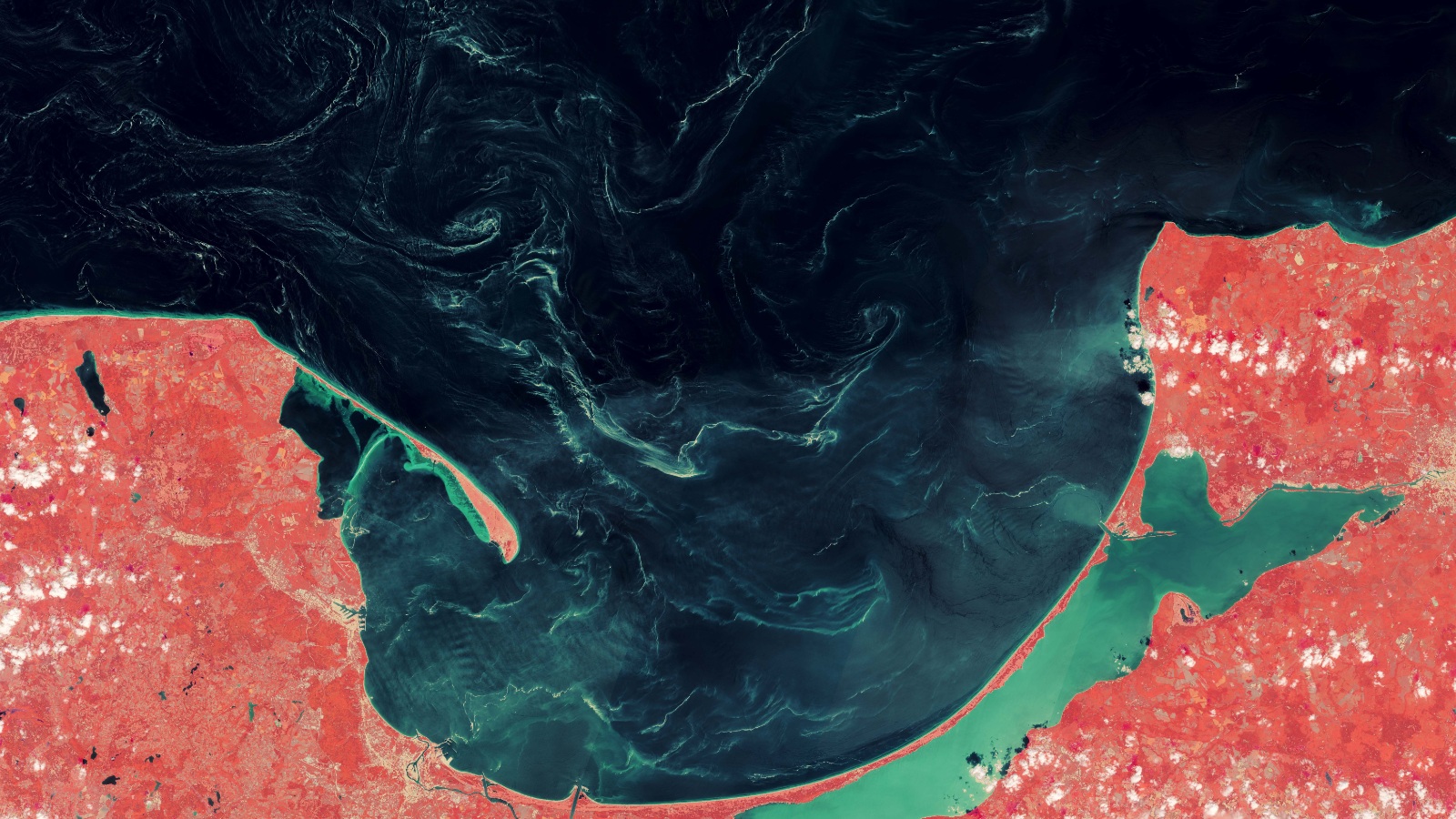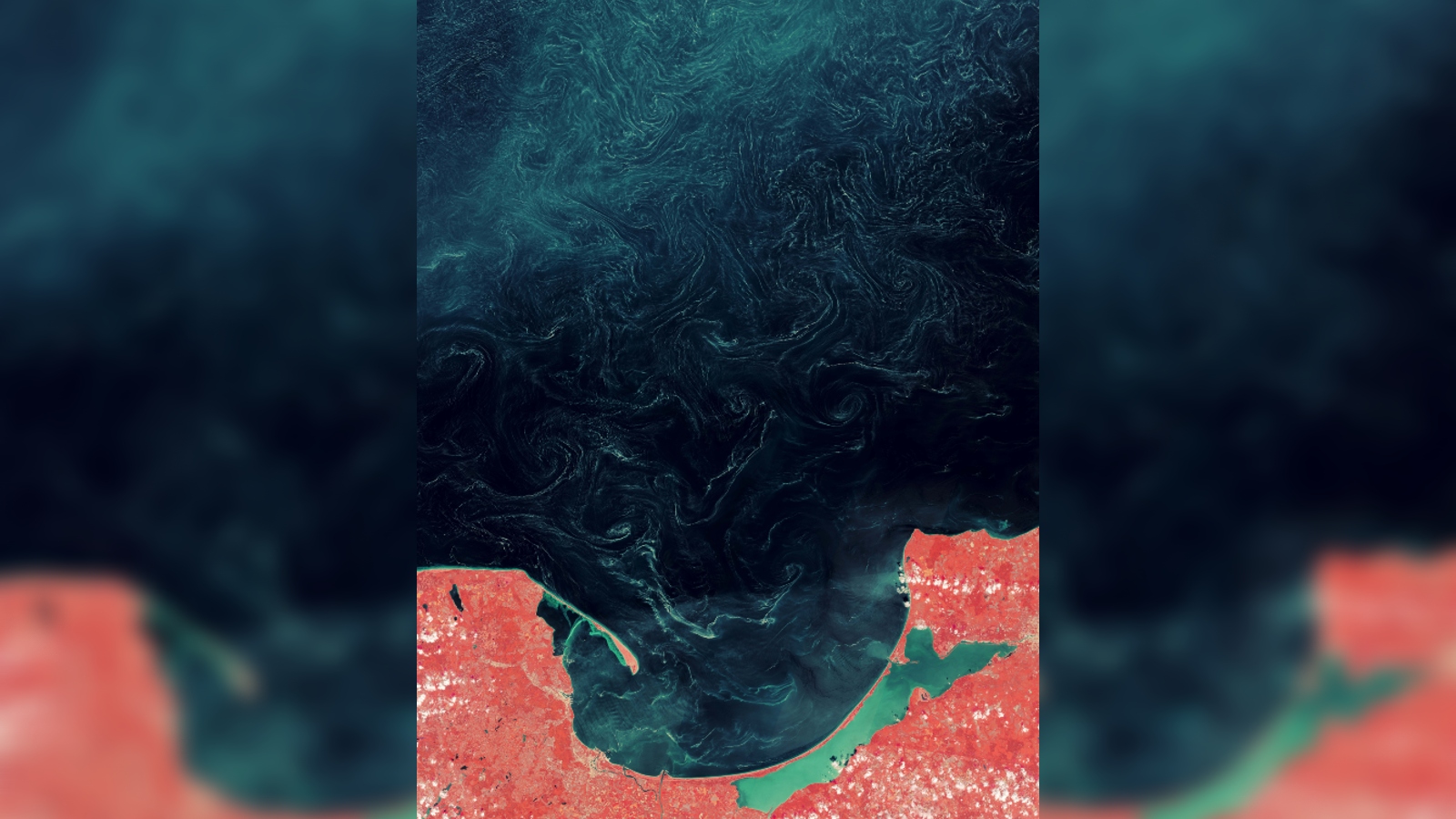Mysterious 'sea swirls' off Poland's coast have a surprising explanation
Researchers have discovered that unusual swirling "slicks" that occasionally appear on the Baltic Sea are actually made from floating tree pollen.

Scientists have finally identified the surprising origin of bizarre ocean slicks that appear to swirl around the surface of the Baltic Sea — tree pollen.
The mysterious slicks are most prominently visible in a color-corrected satellite image captured off the coast of Gdansk in Poland on May 16, 2018, but they have appeared multiple times in satellite images in recent years.
Researchers knew that the swirling patterns were caused by wind-driven currents and waves moving the slicks around on the ocean's surface, but were unsure exactly what they were made of. Experts initially suspected they were algal blooms or "sea snot" — a slimy substance produced by some plankton.
However, in a study published in January in the journal Remote Sensing of Environment, researchers analyzed the reflective properties of the mysterious substance and found that it more closely resembled pollen from pine trees (Pinus sylvestris). The appearance of the slicks and direct observations from local scientists later confirmed that this is what the slicks were made from, researchers wrote.
Related: 10 stunning shots of Earth from space in 2022

Pine trees are the most common tree in Poland, making up more than 55% of the country's forests, which in turn cover just under 30% of the nation's landmass, according to State Forests Poland. However, it was not previously known that the trees' pollen was blown so far offshore.
After identifying the pollen, the researchers looked back at historical satellite images and noted similar slicks appeared 14 times between 2000 and 2021. The amount of pollen in the slicks increased year on year, and the slicks have also started to appear earlier in the year, they found.
Sign up for the Live Science daily newsletter now
Get the world’s most fascinating discoveries delivered straight to your inbox.
The changes in pollen levels during the study period reflect a global trend of increasing pollen levels brought on by climate change.

In February 2021, a study published in the journal Environmental Sciences revealed that in North America, pollen levels increased by 21% between 1990 and 2018, and that the pollen season lasted for around 20 days longer on average.
According to NASA's Earth Observatory, these changes are the result of additional carbon dioxide in the atmosphere, which allows plants to produce more pollen.
Due to pollen's high organic carbon content, the team believes follow-up studies are needed to fully assess the role it plays in oceanic ecosystems.
"If we can track pollen aggregation in different places, this may provide useful data for fisheries studies," lead study author Chuanmin Hu, an optical oceanographer at the University of South Florida, told the Earth Observatory. The data could also complement land based pollen detectors in tracking long term trends that could impact people with allergies, he added.

Harry is a U.K.-based senior staff writer at Live Science. He studied marine biology at the University of Exeter before training to become a journalist. He covers a wide range of topics including space exploration, planetary science, space weather, climate change, animal behavior and paleontology. His recent work on the solar maximum won "best space submission" at the 2024 Aerospace Media Awards and was shortlisted in the "top scoop" category at the NCTJ Awards for Excellence in 2023. He also writes Live Science's weekly Earth from space series.










